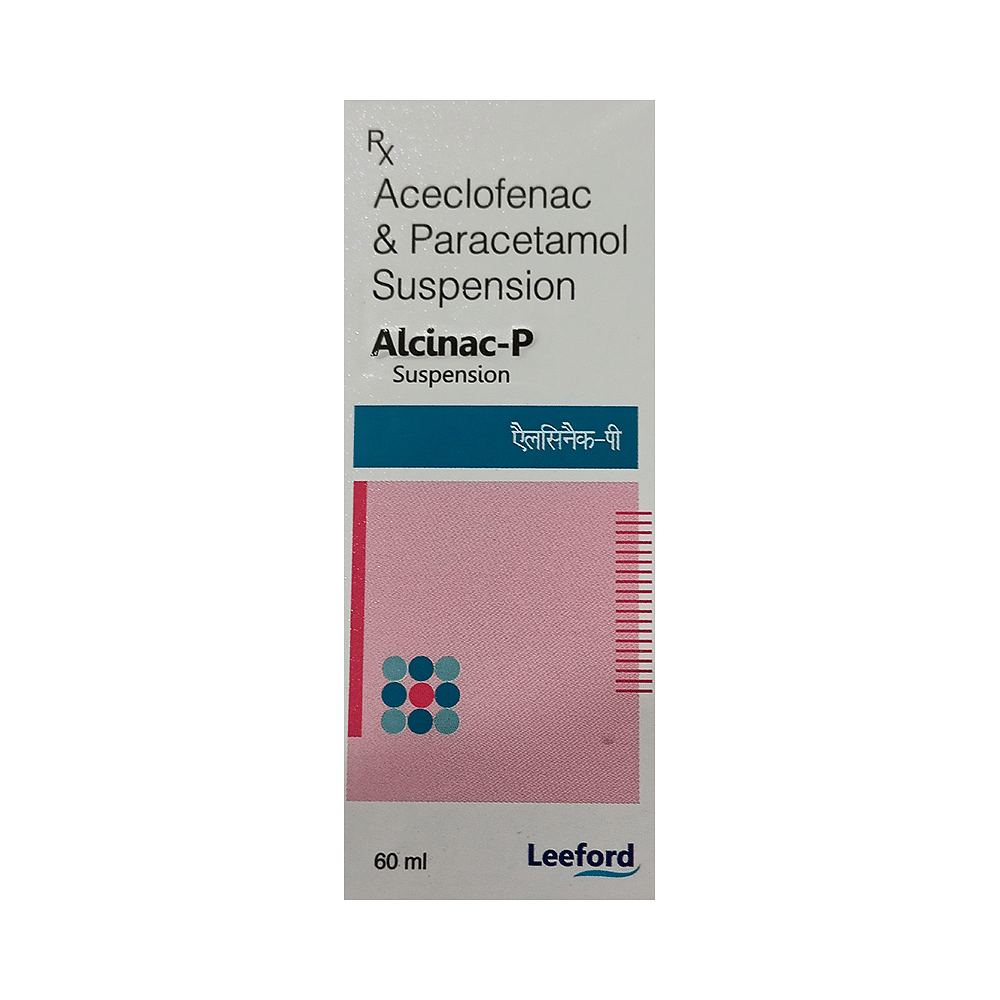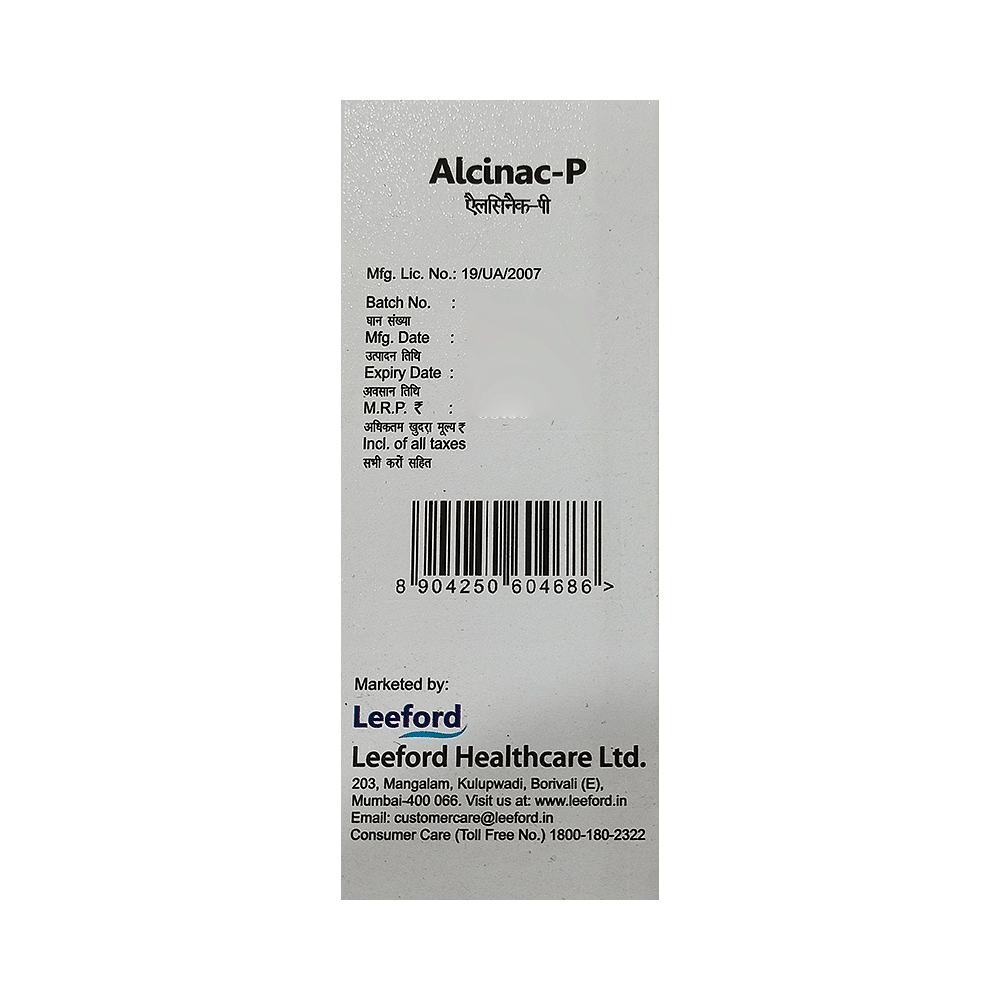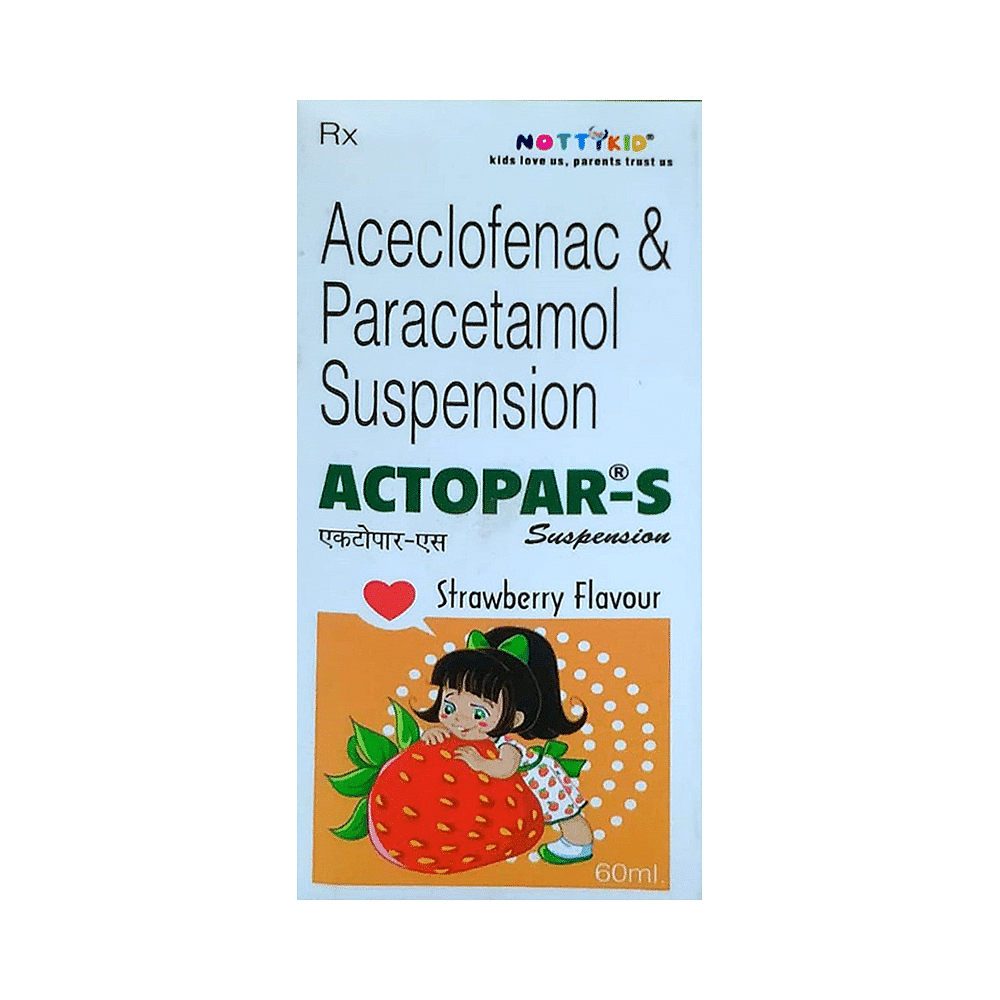


Alcinac-P Oral Suspension
Manufacturer
Leeford Healthcare Ltd
Salt Composition
Aceclofenac (50mg) + Paracetamol (125mg)
Key Information
Short Description
Alcinac-P Oral Suspension helps lower body temperature (fever) and reduce pain and inflammation (redness and swelling) both in infants and children.
Dosage Form
Oral Suspension
Introduction
Alcinac-P Oral Suspension is a medication used to help lower body temperature (fever) and reduce pain and inflammation (redness and swelling) in infants and children. It is available in an oral suspension form and is typically given after food to avoid abdominal discomfort.
Directions for Use
Give this medicine after food to avoid abdominal discomfort in your child. Maintain a log of your child's temperature. If you do not see any improvement, contact your child's doctor for advice.
How it works
Alcinac-P Oral Suspension comprises two active ingredients: Aceclofenac and Paracetamol. These medicines work by blocking the action of chemical messengers responsible for pain, fever, and inflammation (redness and swelling).
Quick Tips
Give plenty of fluids to your child to ensure proper body hydration (water-levels) Give your child a balanced diet Encourage your child to have optimum sleep since sick children get tired soon and getting plenty of rest helps them recover faster. Stop the medicine and consult your child's doctor in case your child exhibits allergic rash or stomach pain soon after taking this medicine.
Related Medicines

Acinist P Oral Suspension

Shalgesic Oral Suspension

Medlofenac P Oral Suspension

Shivace-P Oral Suspension

Arocan P Oral Suspension

Sefenec-P Oral Suspension

Visnac P Oral Suspension

Prasmol A Oral Suspension

Clocell P Oral Suspension

Actopar-S Oral Suspension Strawberry
Frequently asked questions
What happens if I change the dose of Alcinac-P Oral Suspension for my child without consulting a doctor?
Changing the dose of Alcinac-P Oral Suspension without proper judgment can lead to toxicity from increasing the dose or recurrence of symptoms from decreasing it. For best results, consult your child’s doctor if you feel a change in dose may be needed.
How is the correct dose of Alcinac-P Oral Suspension determined for my child?
Your doctor will prescribe the dose according to your child's condition and body weight. Stick to the prescribed dosing schedule as it is the best way to ensure the safe and complete recovery of your child.
How should Alcinac-P Oral Suspension be stored?
Alcinac-P Oral Suspension should be stored at room temperature, in a dry place, away from direct heat and light. Keep all medicines out of the reach and sight of children to avoid any accidental intake.
Can I give my child a different dose of Alcinac-P Oral Suspension than what was prescribed by their doctor?
No, Alcinac-P Oral Suspension cannot be given in the same dose to everyone. The doctor decides the appropriate dose based on the child's age and body weight, which will even change for your child as they grow older. Do not give any dose of this medicine to anyone without consulting a doctor.
How long does it take my child to feel better after starting Alcinac-P Oral Suspension?
Your child may need to take Alcinac-P Oral Suspension for a few days to weeks, depending on the severity of their infection. Keep giving this medicine in the dose and frequency advised by the doctor, and you'll notice that the pain or fever will reduce and your child will start feeling better.
What are some serious side effects I should be aware of when my child takes Alcinac-P Oral Suspension?
Although Alcinac-P Oral Suspension is well-tolerated, if your child experiences persistent vomiting, body swelling, decreased urine frequency, or a serious allergic reaction, seek medical attention immediately.
Are there any specific conditions that make it unsafe for my child to take Alcinac-P Oral Suspension?
The use of Alcinac-P Oral Suspension is considered harmful for patients with known allergy to the components or excipients, patients with a history of stomach ulcers or active bleeding, and patients with heart failure, high blood pressure, liver, or kidney disease.


